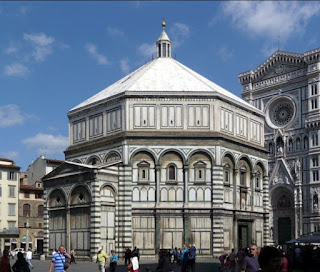Today was a busy day since we were arriving in Naples, Italy and we had a lot of ground to cover. Our first stop was Pompeii so we took an early morning train to get there. The city of Pompeii was an ancient Roman town-city near modern Naples in the Italian region of Campania, in the territory of the comune of Pompei. Pompeii, along with Herculaneum and many villas in the surrounding area, was mostly destroyed and buried under 13 to 20 ft of ash and pumice in the eruption of Mount Vesuvius in 79 AD.
Researchers believe that the town was founded in the seventh or sixth century BC by the Osci or Oscans. It came under the domination of Rome in the 4th century BC, and was conquered and became a Roman colony in 80 BC after it joined an unsuccessful rebellion against the Roman Republic. By the time of its destruction, 160 years later, its population was estimated at 11,000 people, and the city had a complex water system, an amphitheatre, gymnasium, and a port.

The eruption destroyed the city, killing its inhabitants and burying it under tons of ash. Evidence for the destruction originally came from a surviving letter by Pliny the Younger, who saw the eruption from a distance and described the death of his uncle Pliny the Elder, an admiral of the Roman fleet, who tried to rescue citizens. The site was lost for about 1,500 years until its initial rediscovery in 1599 and broader rediscovery almost 150 years later by Spanish engineer Rocque Joaquin de Alcubierre in 1748. The objects that lay beneath the city have been preserved for centuries because of the lack of air and moisture. These artifacts provide an extraordinarily detailed insight into the life of a city during the Pax Romana. During the excavation, plaster was used to fill in the voids in the ash layers that once held human bodies. This allowed one to see the exact position the person was in when he or she died.

Pompeii has been a tourist destination for over 250 years. Today it has UNESCO World Heritage Site status and is one of the most popular tourist attractions in Italy, with approximately 2.5 million visitors every year.
After a few hours visiting Pompeii we took the train to Sorrento. Sorrento may have become a jumping-off point for visitors to Pompeii, Capri, and Amalfi, but you can find countless reasons to love it for itself. The Sorrentine people are fair-minded and hardworking, bubbling with life and warmth. The tuff cliff on which the town rests is like a great golden pedestal spread over the bay, absorbing the sunlight in deepening shades through the mild days, and orange and lemon trees waft a luscious perfume in spring.

In the evening, people fill cafés to nibble, sip, and talk nonstop; then, arms linked, they stroll and browse through the maze of shop-lined lanes. It has been this way for centuries, ever since Sorrento became a prescribed stop for Grand Tour travelers, who savored its mild winters while sopping up its culture and history. According to a letter from his traveling companion in 1876, the philosopher Nietzsche, not generally known for effervescence, "laughed with joy" at the thought of going to Sorrento, and French novelist Stendhal called it "the most beautiful place on earth." Many visitors still share his opinion.

Winding along a cliff above a small beach and two harbors, the town is split in two by a narrow ravine formed by a former mountain stream. To the east, dozens of hotels line busy Via Correale along the cliff—many have "grand" included in their names, and some indeed still are. To the west, however, is the historic sector, which still enchants. It's a relatively flat area, with winding, stone-paved lanes bordered by balconied buildings, some joined by medieval stone arches. The central piazza is named after the poet Torquato Tasso, born here in 1544. This part of town is a delightful place to walk through, especially in the mild evenings, when people are out and about, and everything is open. Craftspeople are often at work in their stalls and shops and are happy to let you watch; in fact, that's the point. Music spots and bars cluster in the side streets near Piazza Tasso.
After some sightseeing we decided to stop in a quaint restaurant and had a fabulous pizza. There is nothing like watching the world go by in a picture-postcard setting enjoying a good meal.
By late afternoon we caught a train from Sorrento back to Naples to board our ship.








































